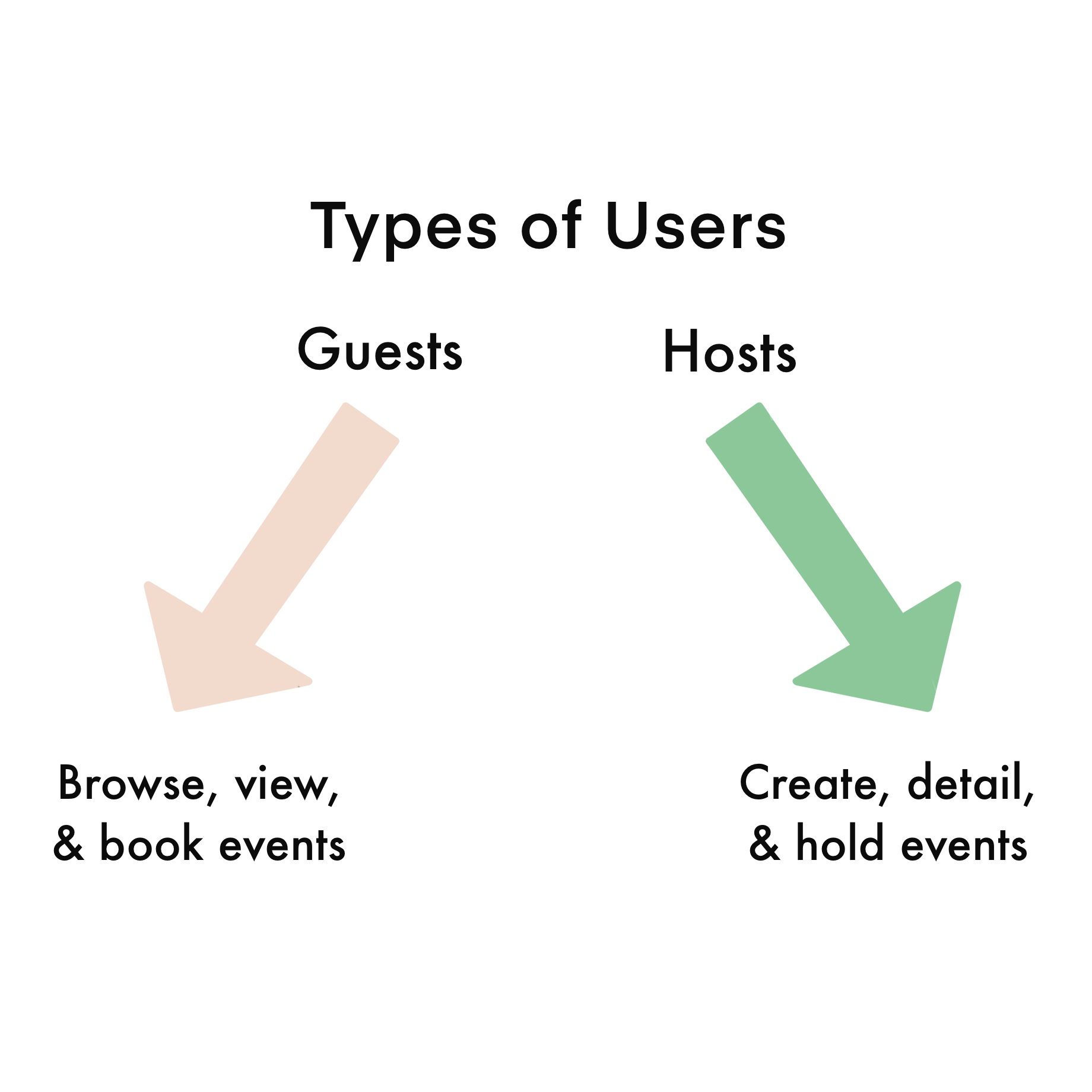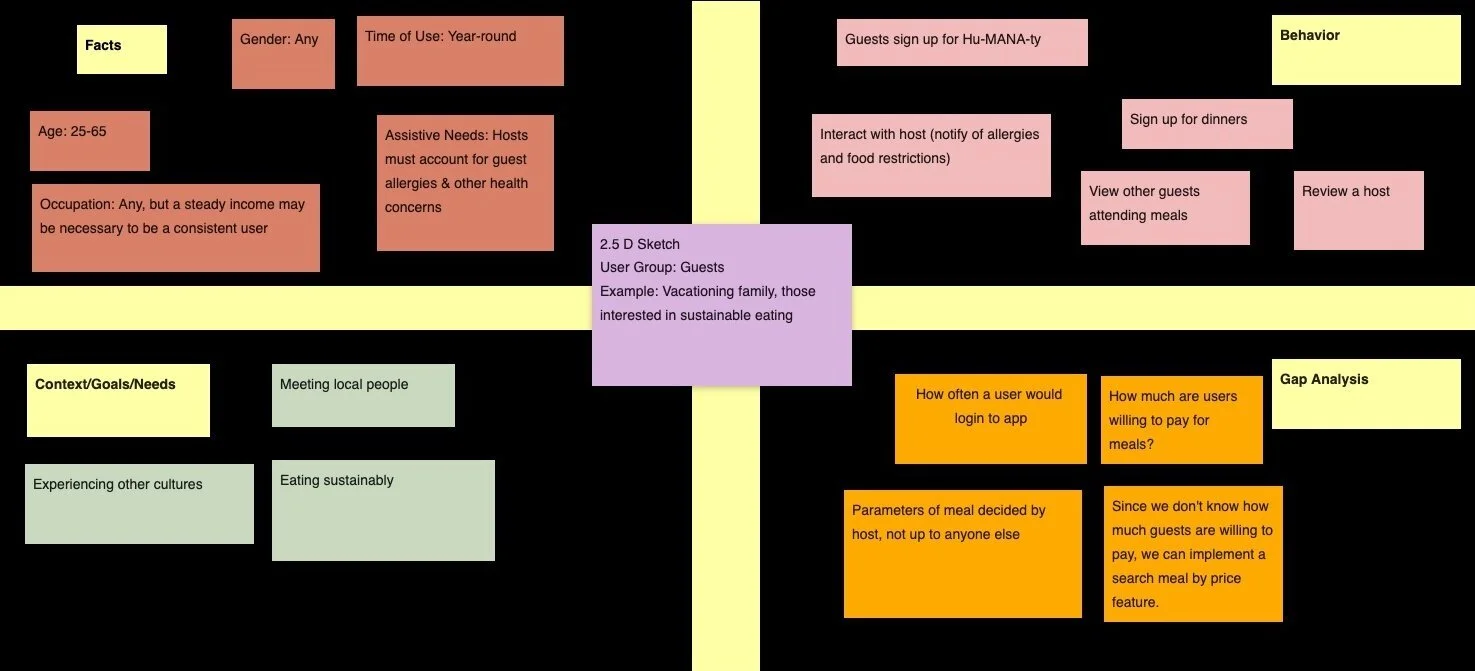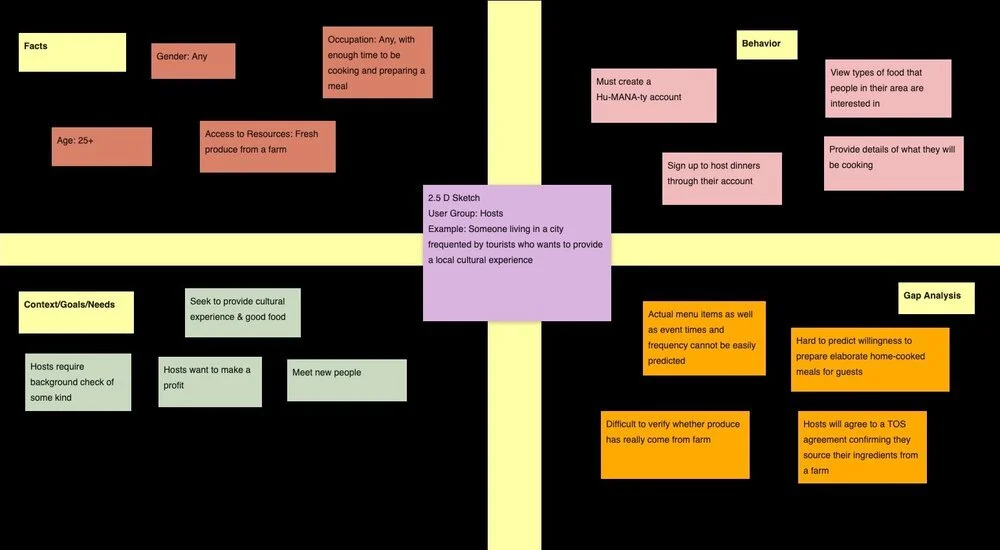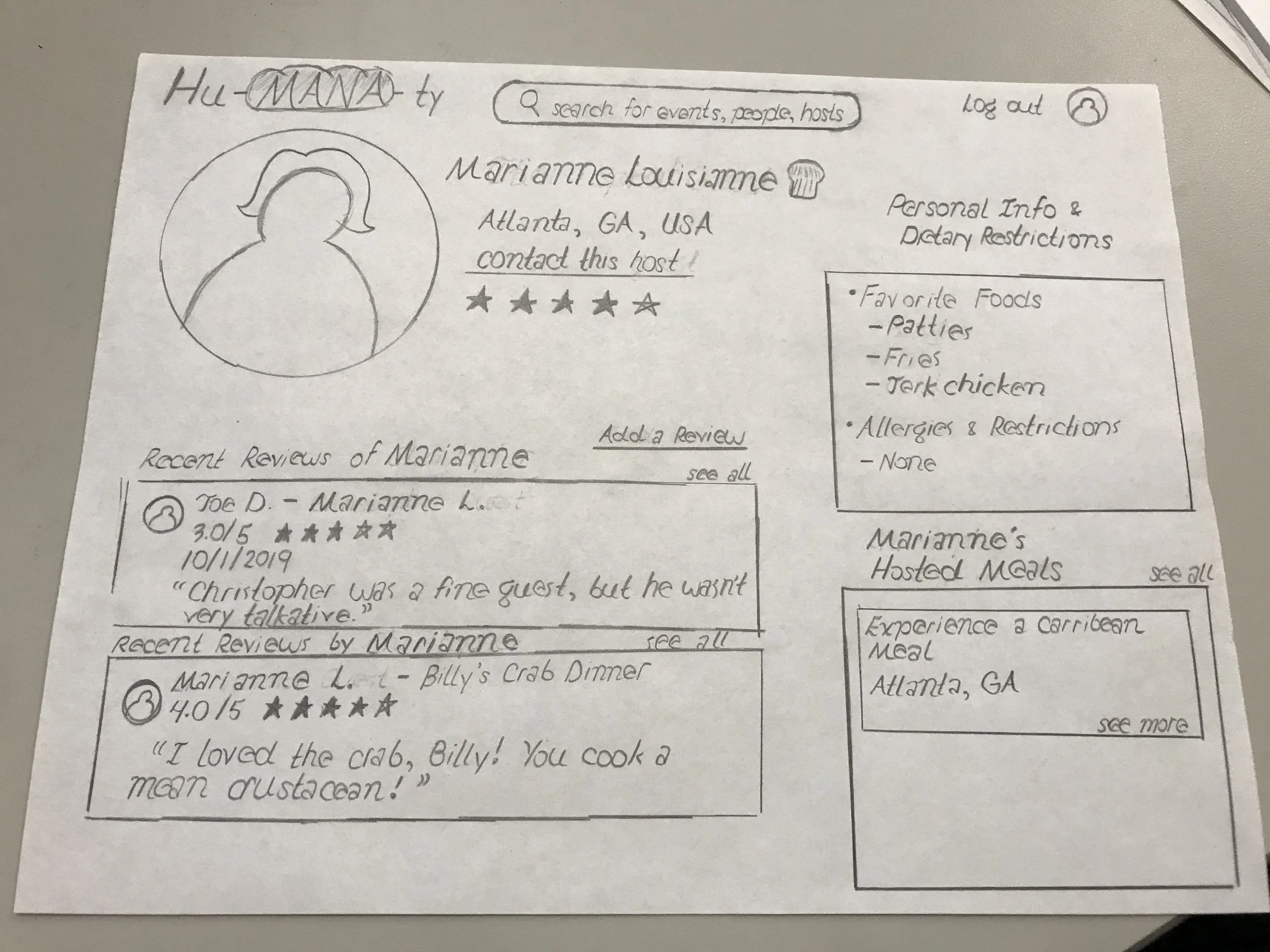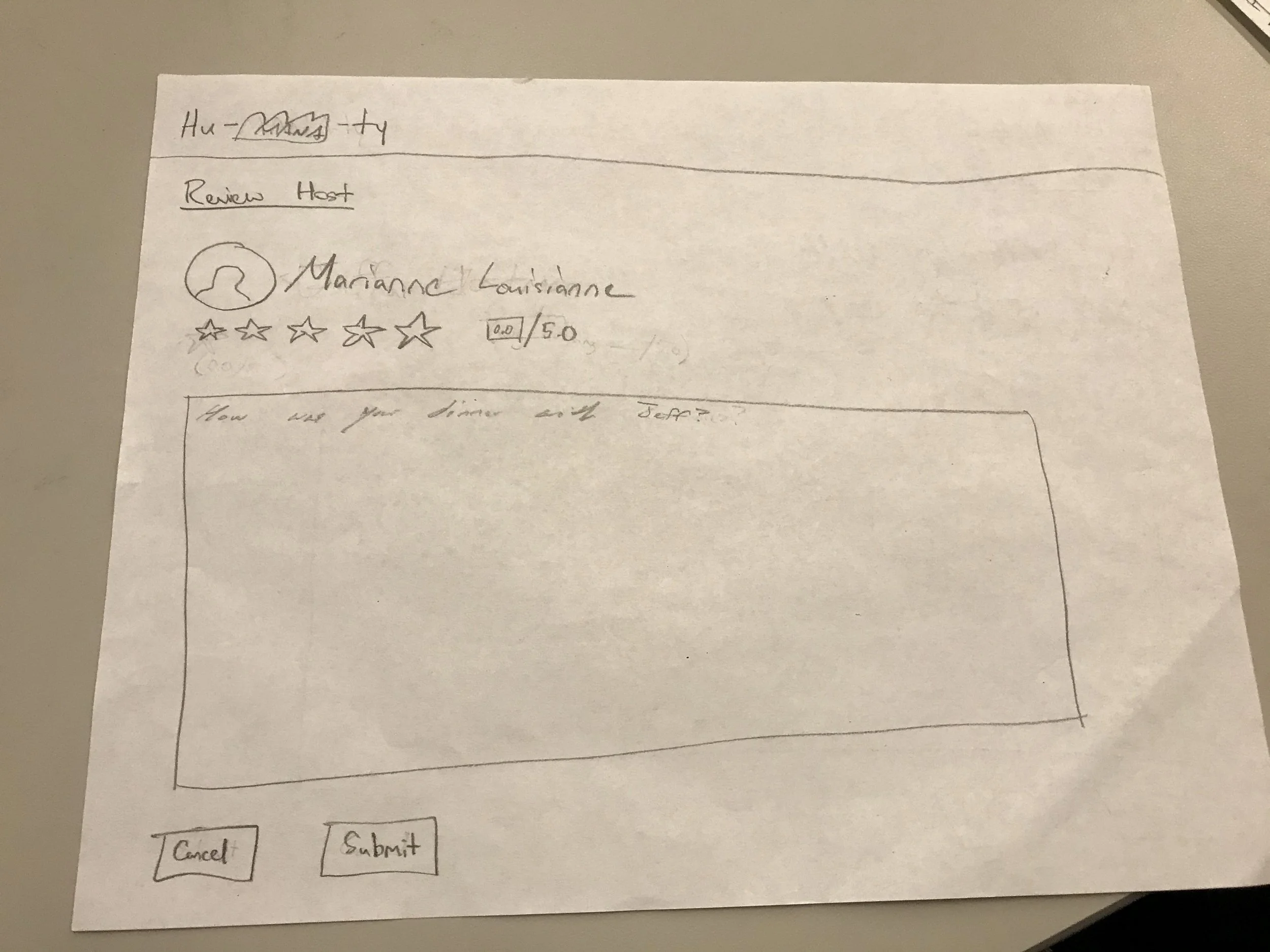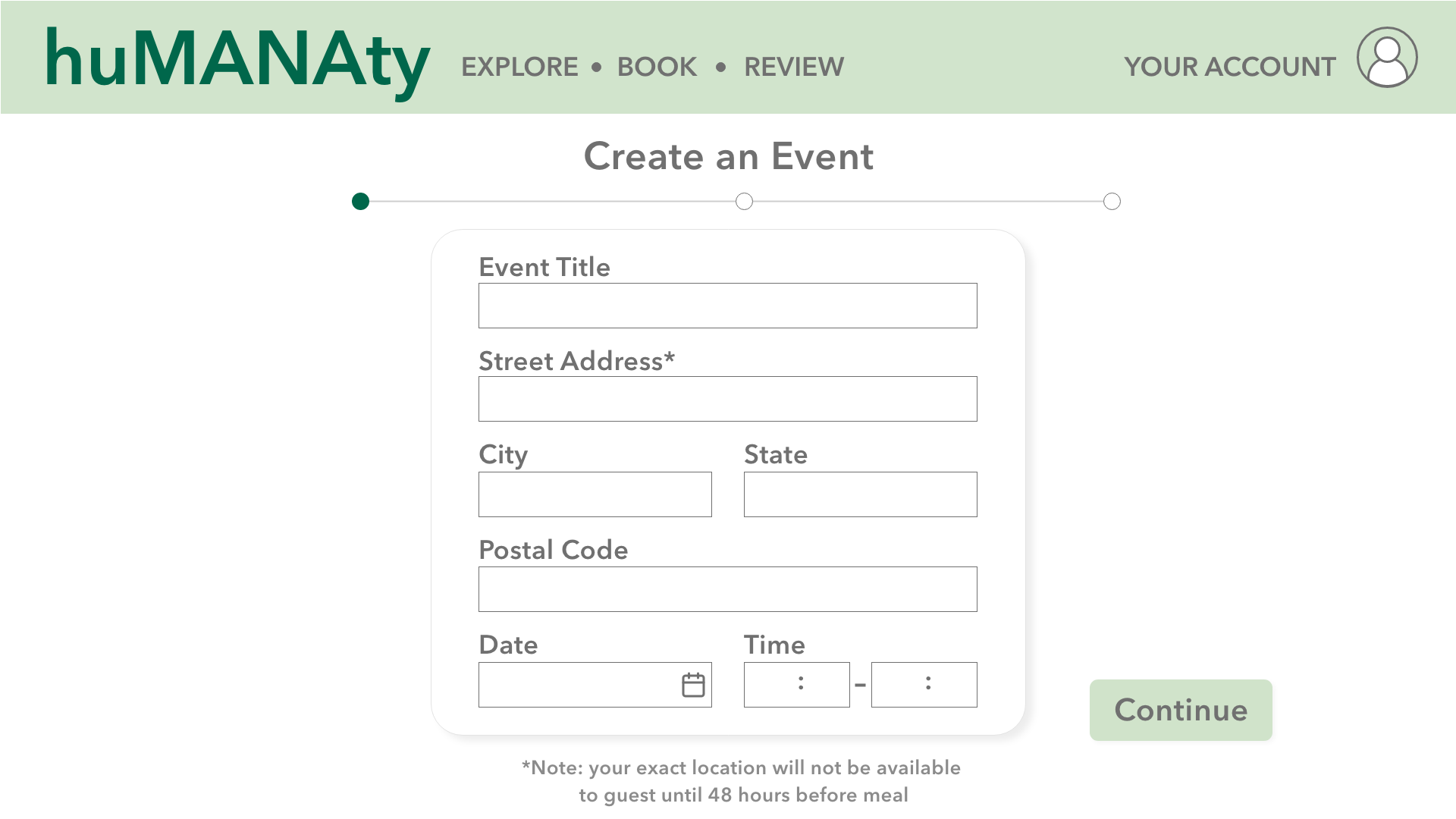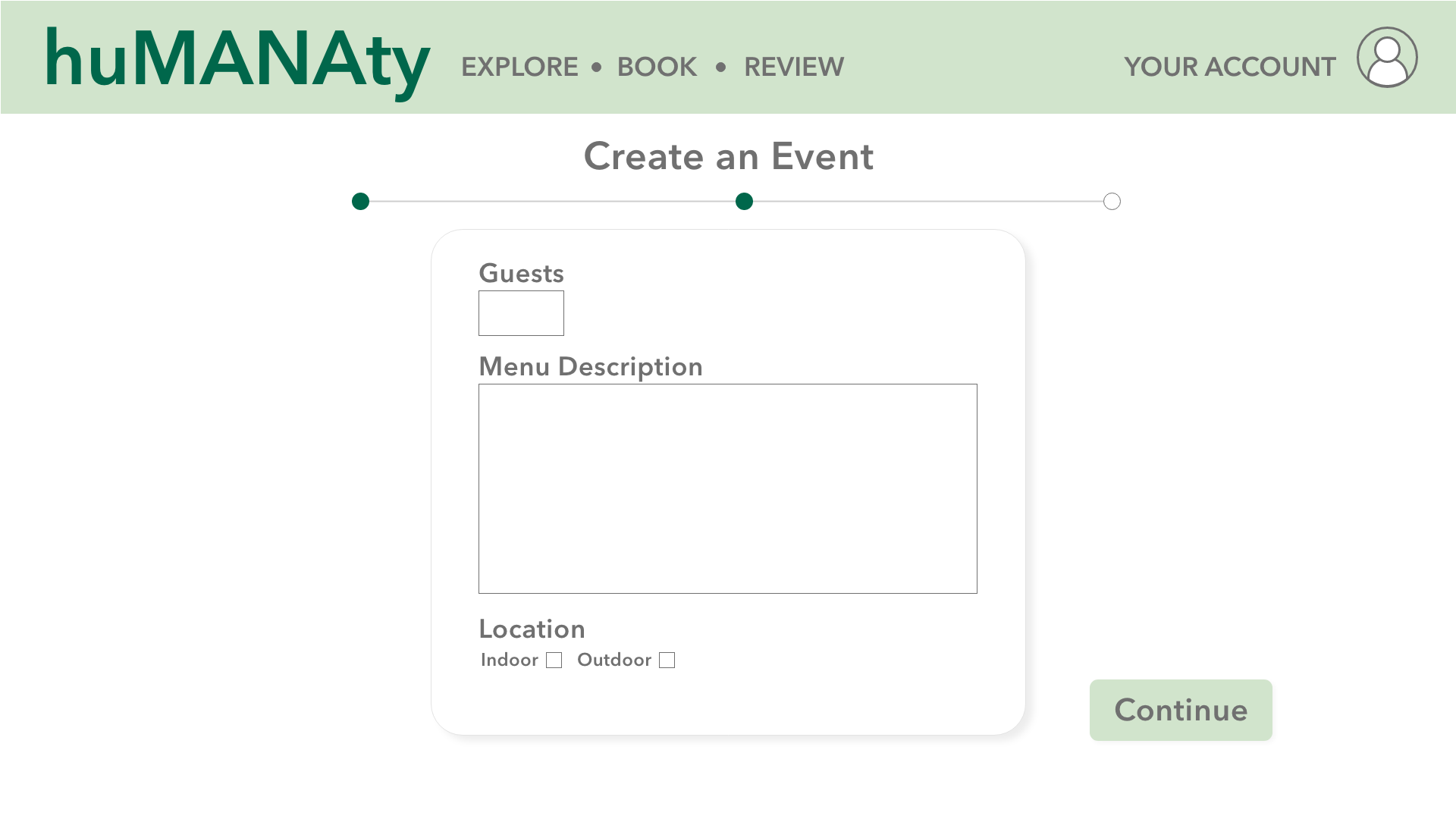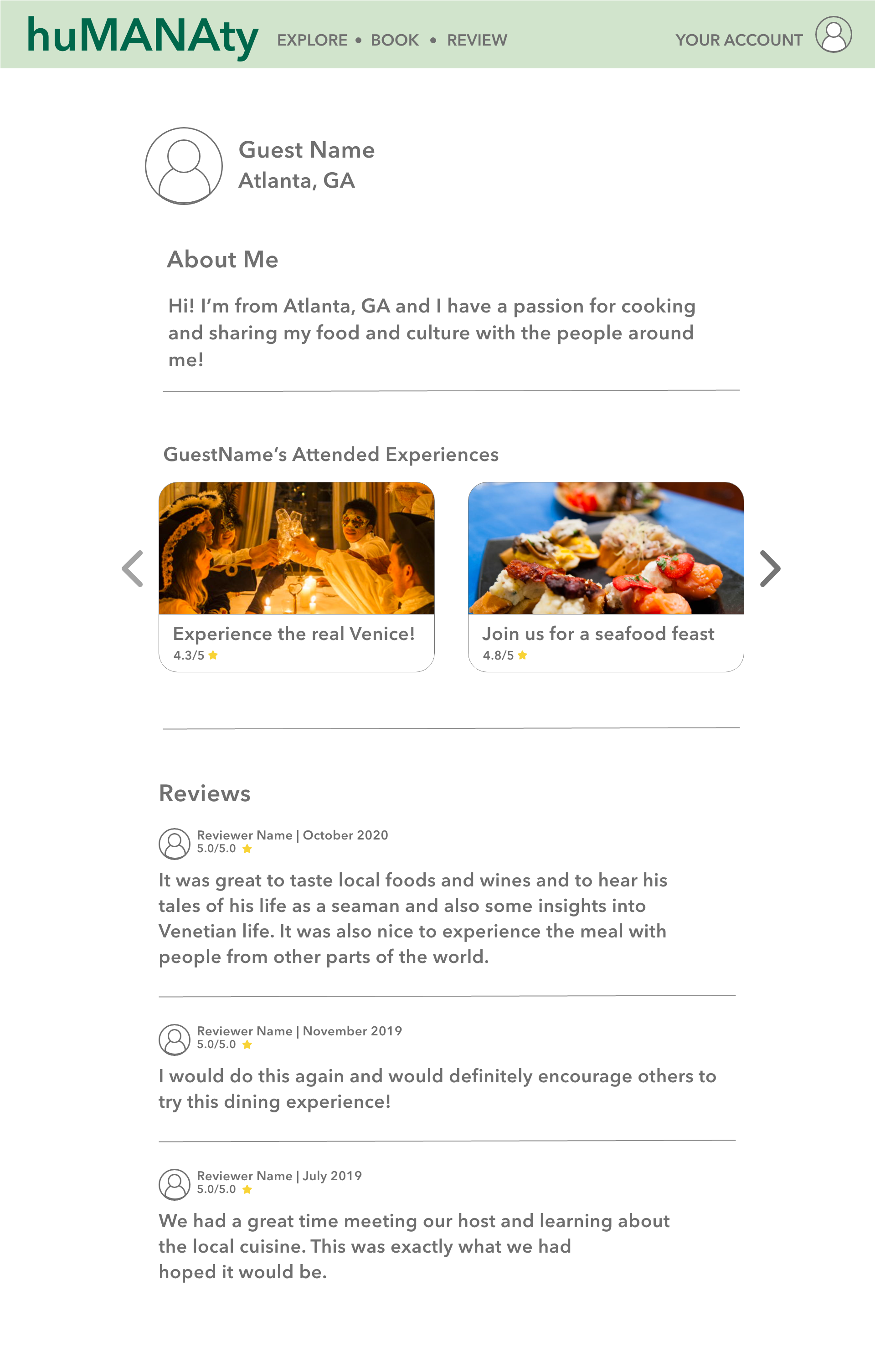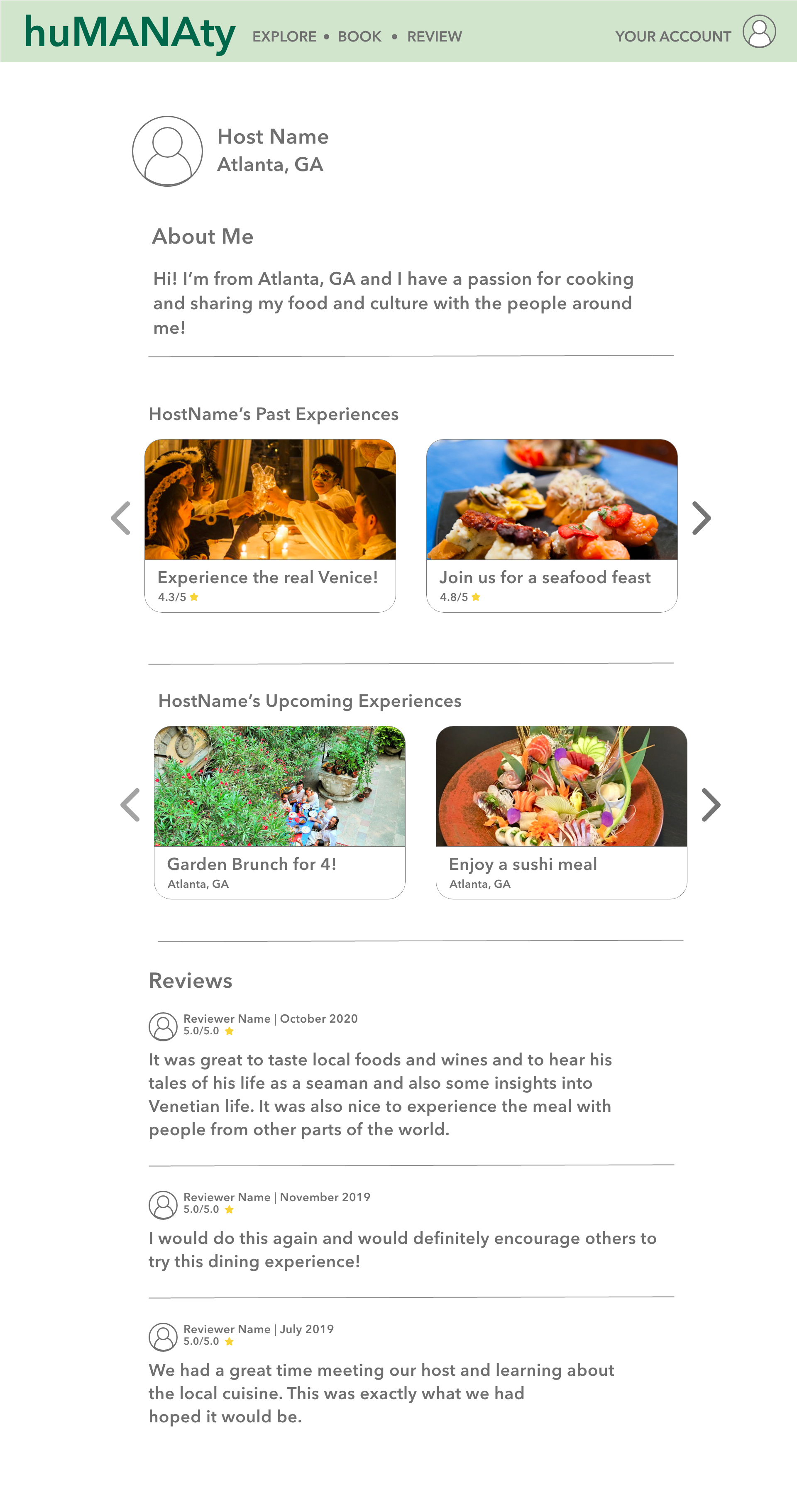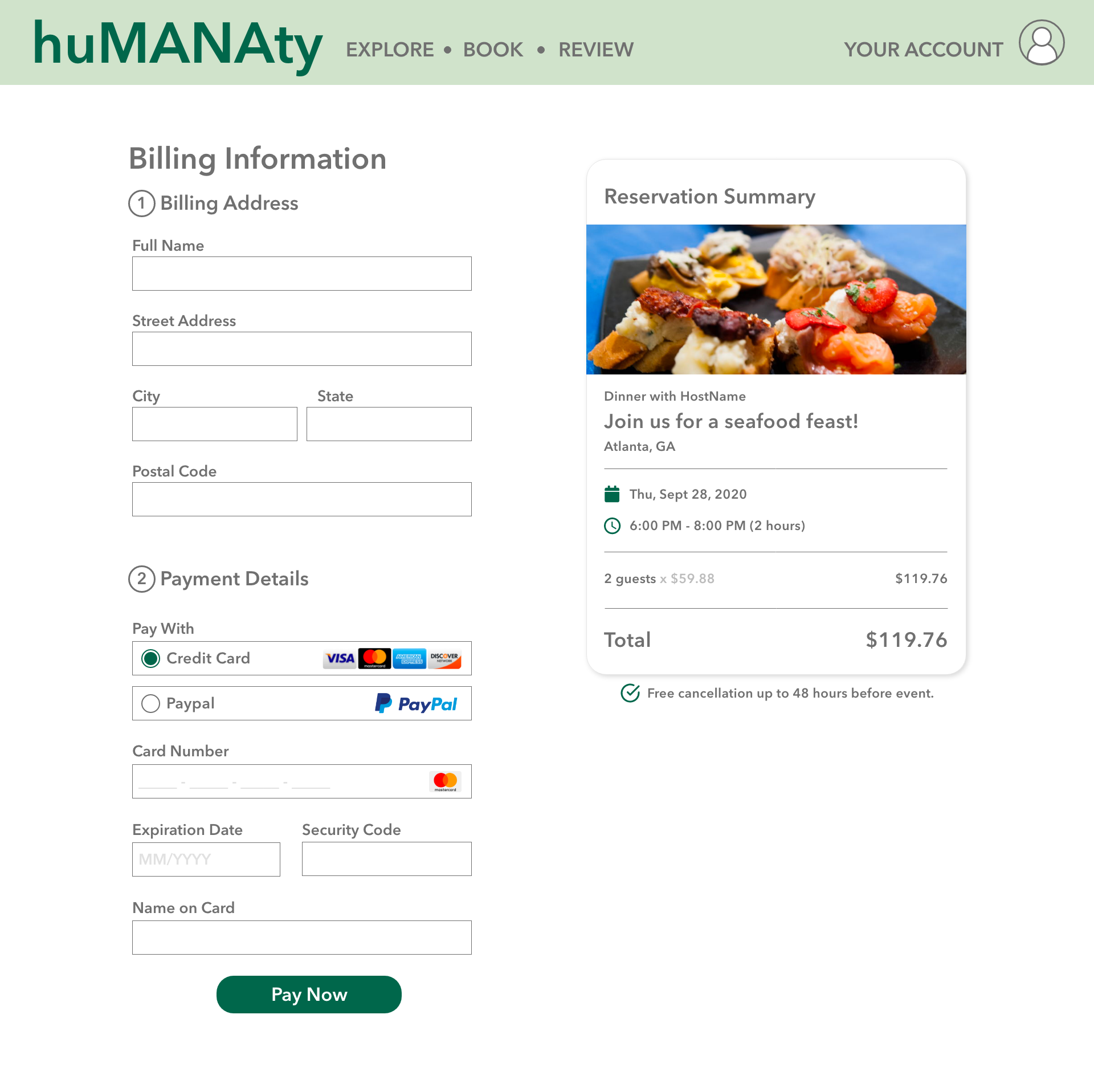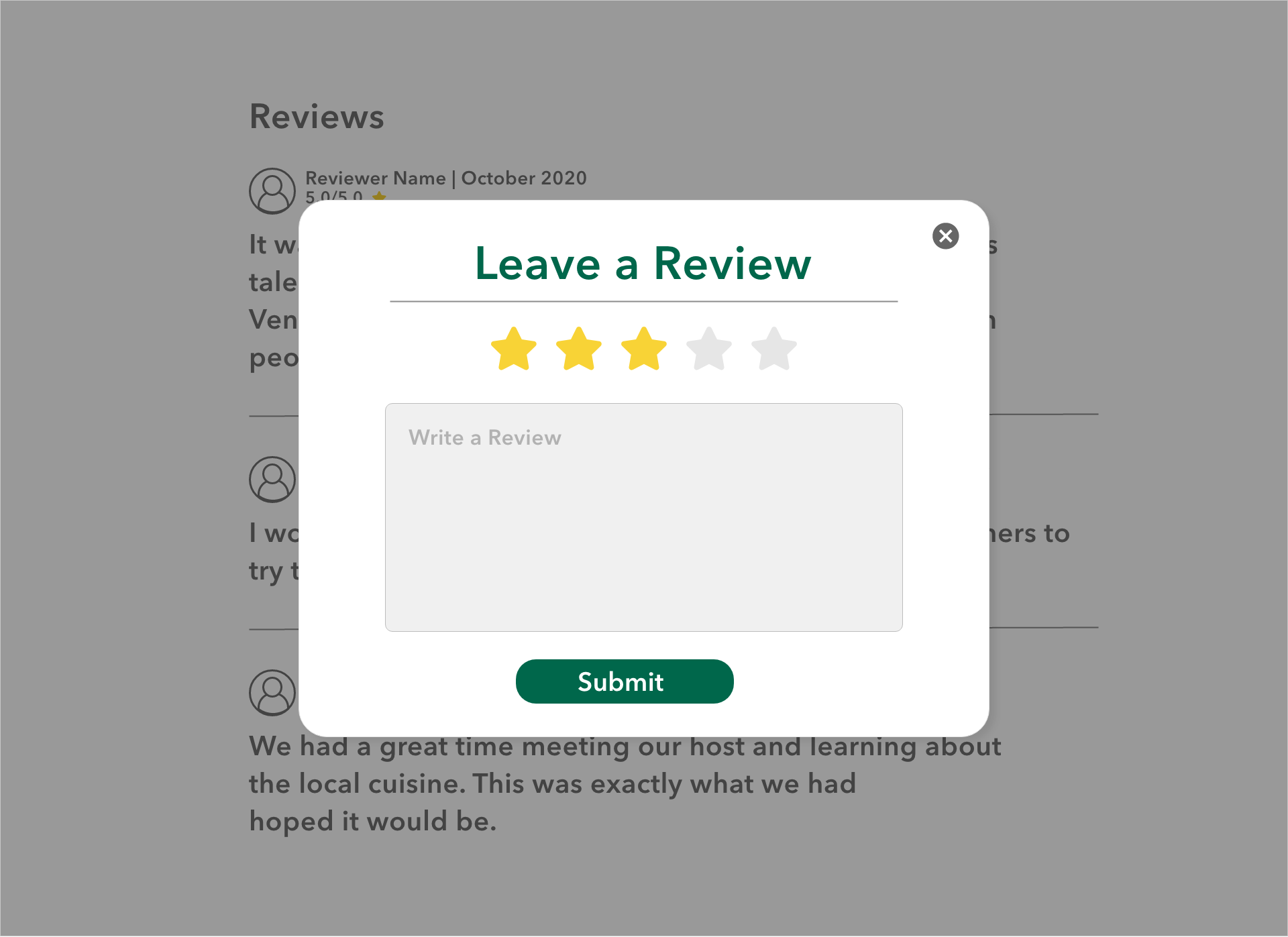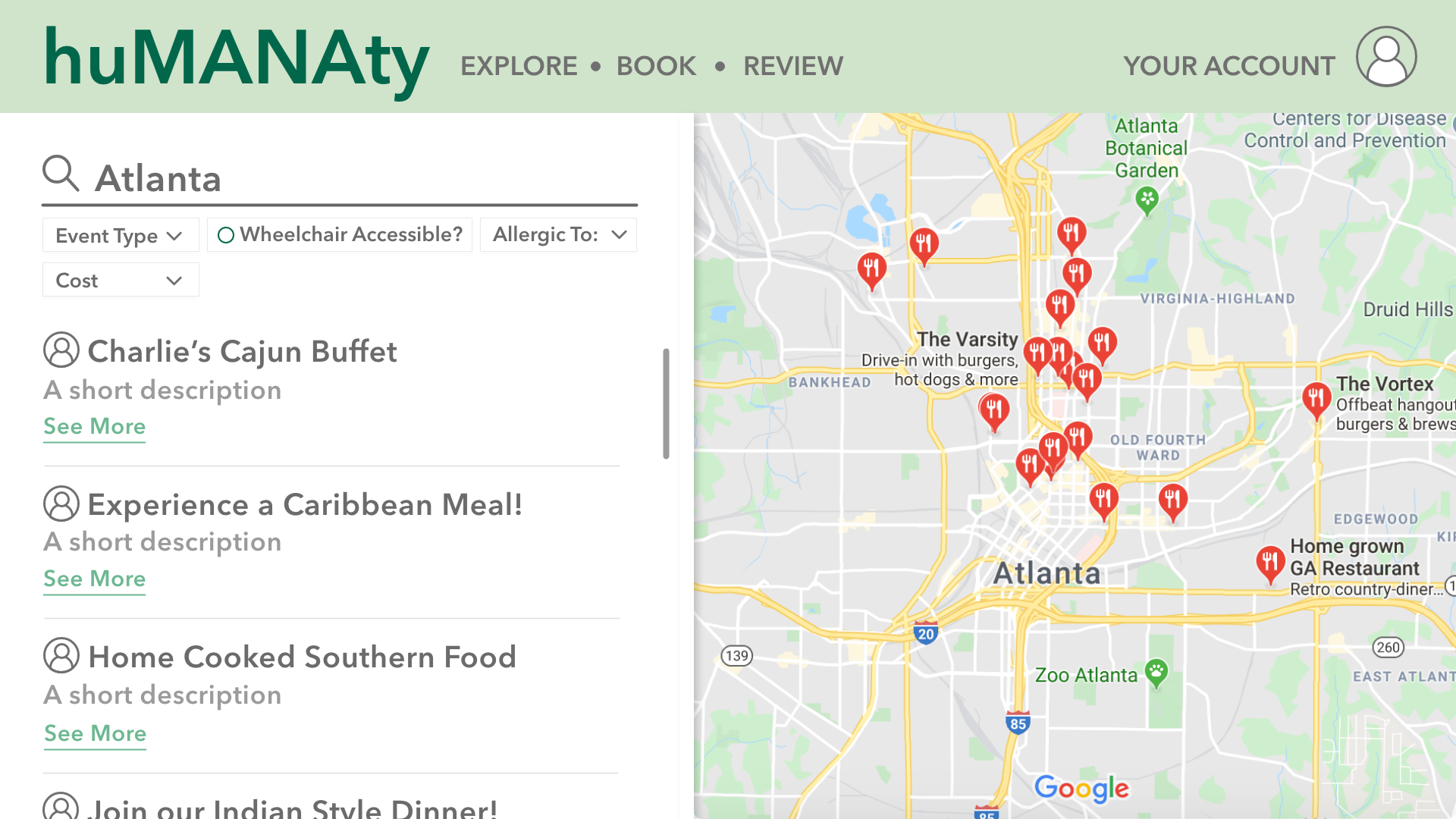Objective
Humanaty
Over semester: To create a functioning website for a farm-to-table service that encourages sustainable means of eating.
Note: This project is part of on ongoing 2-semester class. In the first half of the course, my team completed much of the UX process as well as design for our project. In the following semester, we will be going into coding and implementation of everything we planned during semester 1.
Project Details
MY ROLE
UX Researcher, UX Designer
TEAMMATES
Jodianne Bartolo, Andrew Dallas, Kierra Brigman, Zachary Allen
TIMEFRAME
August 2019 - December 2019
TOOLS & METHODS
Field research, Adobe Illustrator, Adobe XD, Pin-up, Prototyping
Our Given Problem
At the beginning of our project, my team was introduced to out client, Beth Graham from Beth Graham Consulting. One of her ongoing dreams had always been to establish a meal-sharing service that allowed for people to connect over food. She previously found that there was no product that truly focuses on the intersection of community and environmentally-friendly eating, and this is what she wanted to provide for the world. Humanaty is a company through which people are able to book meals through a host and visit them in their setting to have a home-cooked meal. The food served would also be locally and organically sourced. This is a service that we found did not exist yet, and my group was tasked with bringing it to life.
Project Overview
• Research
• Analysis
• Prototyping
• User Testing
• Client Review
Initial Research
• Who are the target users?
• Would the imagined demographic really use this service?
• What types of food-sharing services exist and who do/don’t they work?
Research Findings
My team ended up splitting into 2 groups in order to find out more about who would be using our product. One half focused on finding alternatives to Humanaty’s intended services through scholarly articles as well as investigating similar products such as EatWith and OpenTable.
I went along with the other half of the group in order to conduct some field research. We attended one of Ponce City Market’s farmers markets in Atlanta to see whether we could find the right demographic of people as well as level of interest in this type of product.
We realized quickly that the community aspect of Humanaty was one that caught the attention of most of the people we talked to. The 4 interviewees we spoke to did express interest in this kind of service, even saying that a charity aspect could help to draw more people in. The people we talked to were already familiar with eating organically and locally-grown, so they also fit the idea of who we expected to be using this product.
User Analysis and Story Mapping
To learn more about the users we were targeting, we analyzed user types according to 4 criteria: user behavior, goals, facts, and expected gap analysis. In addition, we completed a story mapping exercise as part of Agile development in order to figure out our user stories as well as determine what could be accomplished within our scope for the project.
User Analysis
Story Mapping
Developing the System
Lofi Paper Prototype
Based on our system goals and what scenarios we wanted to test our users with, we came up with a set of paper prototype screens. We were able to test 10 people as well as survey them to get feedback on what did and didn’t work. The task scenarios were as follows:
Login Page:
Login to your account, assuming you’ve already created it.
Search Pages:
Search for food in Atlanta
Sign up for a Caribbean meal
Event Sign-Up:
Book the event for two adults on the 23rd of October
Return home after paying
Profile View:
From the home page, view your profile
Review Pages:
From your profile, rate and submit a review of a host from a past experience.
Based on the user testing, we found that users were able to follow the flow and function of the website. The main feedback we received was relevant in terms of taking out extra steps. People tended to slow down when asked to review a host from their own profile. A faster way would be to do so from either the main home page or the host’s profile instead. The most enjoyable part of our design reported was the dinner plate that users were able to see on the login and home pages. This embodied what the website was really about and added visual interest to the experience.
User Testing
Final Prototype & Client Review
The final prototype was created after making changes based on the user feedback we received. In addition, we consulted with our client to see if there were any changes that we missed that she would like to be implemented. The most important adjustment we made was to have the landing page of the website be the search page. This way, we allowed for people to be able to explore and view the website without being forced to first create an account, since this was how the website was initially structured.
Along with this, I designed the UI of the website with a green color scheme in mind as our client wanted the green to be representative of the sustainable theme surrounding Humanaty.
For a final demo at the end of the semester, my group chose to implement the login and search functionalities. For this, we prototyped the final screens for the login, search, and search results pages, and this concluded this project’s process for its first semester.



